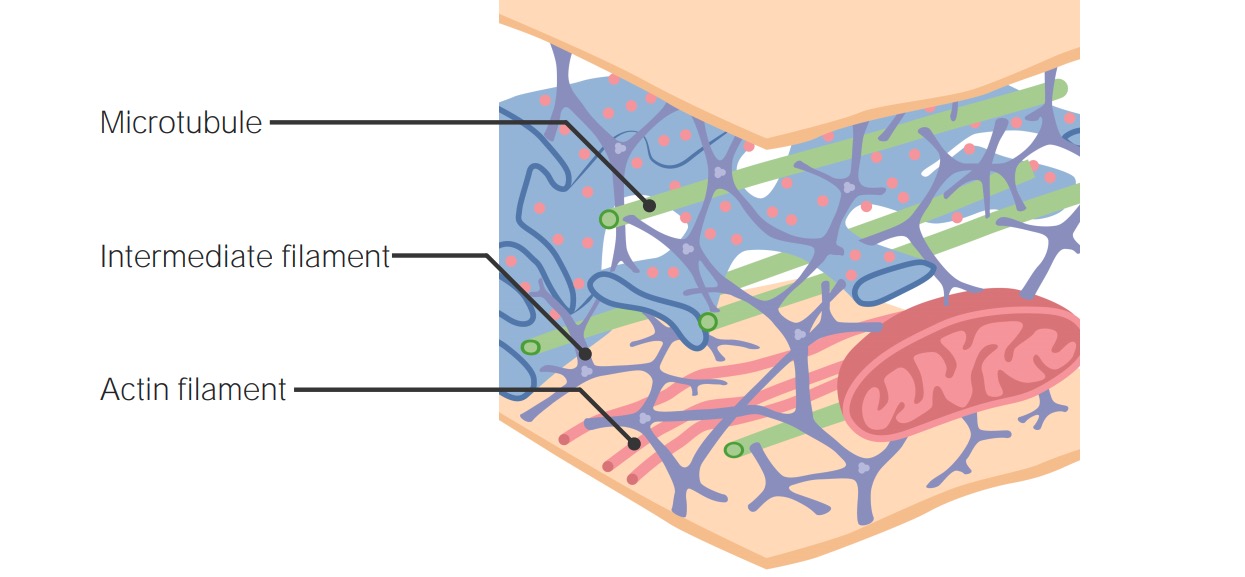Playlist
Show Playlist
Hide Playlist
Lipid Bilayer: Structure & Intracellular and Extracellular Fluid
-
Slides GP Membrane Physiology.pdf
-
Download Lecture Overview
00:01 So mainly, phospholipids are going to be the main processes of cell membrane walls and organelles membrane walls. 00:12 These involve having a small little lipid bilayer, meaning that it has a little bit of a structure in between two other structures and we’ll get to be what that is in a minute. 00:24 Phospholipids, glycolipids, and cholesterol make up the predominant way in which we have this bilayer take place. 00:32 And you notice that all three of these phospholipids, glycolipids, and cholesterols have a colored component that’s on one side and a tail component component that’s on the other. 00:43 And this is very important in how these molecules will eventually orient to two different sides of the membrane. 00:51 So let’s get to those now. 00:54 If you have a phospholipid and you place it within water and oil, the heads of the phospholipids will face the water and the tails will face the oil, and we call those tails that face the oil nonpolar ends. 01:13 Polar ends, however, will face towards the water and this allows for a natural barrier that will occur. 01:21 But remember that we have a double layered membrane, meaning that we have water on both sides of the membrane. 01:31 Therefore, you’re going to have polar heads facing both of the water sides. 01:37 Interestingly, things like phospholipids oftentimes can move a little bit within the wall. 01:44 But they usually only move back and forth or maybe they spin around a little bit, but they don’t flip flop very often from one side of the membrane to the other. 01:57 Now, why are you partitioning some of these particulars spaces? Well, one is that the fluid inside the cell is often very different than the fluid outside of the cell. 02:10 We call the fluid within the cell intracellular fluid and the fluid outside the cell extracellular fluid. 02:17 That extracellular fluid can be broken up into two different components. 02:21 One is interstitial fluid and the second is what’s in blood or plasma. 02:26 So how to think about those differentiations is what’s inside the cell’s intracellular fluid and then everything else is outside the cell or extracellular fluid. 02:37 The fluid that’s directly around the cell is interstitial and that which in the blood vessels themselves is plasma or blood volume. 02:47 We’re going to get back to intracellular and extracellular fluids especially as we talk through the renal system and how a person controls blood volume. 02:55 But it’s very important at this portion to think about what breaks those into those specific different fluid compartments. 03:05 Okay. 03:06 That’s the fluid itself. 03:08 Now, we need to also talk about what particular substances within that fluid or their constituents that will be different across that cell membrane. 03:17 So inside the cell, we don’t have as very much sodium. 03:21 Maybe in this case, we have 12 millimole versus extracellular we have 145. 03:29 So there’s a differentiation between intracellular fluid sodium and extracellular fluid sodium. 03:35 Potassium is the opposite. 03:37 It has more of course potassium inside the cell and outside the cell. 03:42 Calcium has more outside the cell than inside the cell. 03:45 Magnesium isn’t as different across the cell membrane, but there’s still more in the intracellular fluid. 03:53 In terms of chloride, more in the extracellular fluid, phosphate mainly intracellular, bicarb, more in the extracellular fluid than intracellular, and finally, hydrogen ions are very similar across with maybe a bit more in the extracellular space. 04:11 So you think about this, we have all of these different ions with different concentrations inside the cell versus outside the cell. 04:19 We have to think about what that is going to mean for that cell and why that might occur. 04:25 So there are reasons why you have more sodium outside the cell than inside and more potassium inside the cell than outside, and this oftentimes will allow us to develop an electrical gradient or a chemical gradient across the cell membrane. 04:41 And that’s going to be very, very important for us to transport various substances. 04:48 So we oftentimes use ions or their electrical charge as ways in which we can get other substances that we really need inside the cell from the outside the cell fluid or extracellular fluid. 05:02 In terms of other macronutrients, like glucose and amino acids and proteins, in terms of glucose, there’s almost always more glucose in the extracellular fluid than intracellular. 05:13 With amino acid, it varies a lot between which ones we are talking about. 05:17 In terms of proteins, usually there are more proteins in the intracellular fluid than the extracellular fluid. 05:23 Okay. 05:23 So now that we know that there are differences in the fluid and its constituents, let’s keep moving on in talking about cell membranes. 05:34 Now, why do we need to have these various solute differences across the membranes? Well, one is, is this allows us to develop various means of transport to get things from one side of the cell membrane all the way over to the other side of the cell membrane. 05:50 The fastest way to do that is to through a pore. 05:53 So pores are the fastest means in which we can get transport substances across the cell membrane. 06:00 Another way to do it is via ion channels and ion channels are also pretty fast. 06:06 The slowest of which though are via these ATPases. 06:10 So ATPases can divide it into main categories. 06:13 The first are pumps and there are three different types of pumps and we'll spend the most time talking about the V-type pump. 06:21 And the other type of ATPases are ABC transporters and these particular transporters are very specialized and we’ll get to a few of them later on in the course. 06:32 The last type of transport mechanism are solute carriers and there are a loads of solute carriers. 06:40 In fact, there may be even more than 300 or so different types of solute carriers. 06:45 And they can be symporters, meaning that two things are going in the same direction. 06:50 They can be exchangers in which one thing goes in one direction and something goes in the opposite direction or they can be uniports and only go in one direction with one molecule. 07:01 These symporters and antiporters usually need some sort of gradient to drive that transport from occurring. 07:09 So again, we have four different methods of transport: pores, ion channels, ATPases, and solute carriers. 07:16 All of them have different speeds and they have various amounts of selectivity. 07:22 So what I think we’ll do for the rest of this particular lecture is go through some prototypes of these various types of transporters. 07:31 And we’ll go into depth in one particular one so that you understand how that process works. 07:37 And then as they come up throughout the various lectures, you can apply the same kind of principle for pores, ion channels, ATPases, and solute carriers.
About the Lecture
The lecture Lipid Bilayer: Structure & Intracellular and Extracellular Fluid by Thad Wilson, PhD is from the course Membrane Physiology.
Included Quiz Questions
In a phospholipid bilayer, which direction are the polar heads facing?
- Toward the inside and outside of the cell
- Toward the extracellular matrix only
- Toward the nucleus
- Toward the hydrophobic side
- Toward the hydrophilic side on the inside of the cell
Which of the following ions is at a higher concentration in the intracellular fluid compartment compared to the extracellular fluid compartment?
- Potassium
- Calcium
- Chloride
- Sodium
What are the components of a cell membrane?
- Phospholipids, glycolipids, and cholesterol
- Glucose, proteins and triglycerides
- Triglycerides
- Recurring glucose moieties
How thick is the cell membrane?
- 7-10 nanometers
- 3 nanometers
- 8-10 microns
- 3-6 microns
- 2 microns
Which ends of the phospholipids in the cell membrane face each other?
- The hydrophobic, or non-polar ends
- The polar ends
- The round-headed ends
- The ionized ends
- The electrically charged ends
In which ways can phospholipids move within the cell membrane?
- Side to side or rotate
- Flip
- Upside down and sideways
- They can exchange position with parts of the glycoproteins
- They can separate heads from tails
Why is there a difference in ion composition between the intracellular and extracellular compartments?
- To establish an electrochemical gradient
- Because the intracellular protein components are ionized
- Because the extracellular fluid has the most ions
- Because the intracellular fluid has the most ions
- Because the extracellular fluid has the most proteins
Which are the fastest transmembrane transport systems?
- Pores
- Ion channels
- Solute carriers
- ABC transporters
- V Type ATPases
In which of the following are proteins usually more abundant?
- In the intracellular compartment
- In the extracellular compartment
- In the interstitial fluid
- In the intravascular compartment
- Roughly the same in all compartments
Customer reviews
5,0 of 5 stars
| 5 Stars |
|
1 |
| 4 Stars |
|
0 |
| 3 Stars |
|
0 |
| 2 Stars |
|
0 |
| 1 Star |
|
0 |
Really nice lecture, clear and easy to understand, with a lot of examples.




